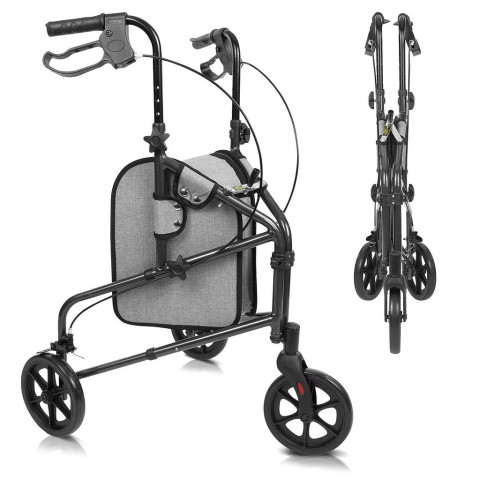Medical walkers can be rented by people who need a base to stand on when moving and walking inside or outside. This group includes adults with less movement coordination, limited lower body bearing capacity, poor balance, older people, and people with other conditions that make it hard to move around and may not benefit from use. People who use these walkers can feel safe and confident again while they are getting better from an injury or illness because the walkers give them stability and movement. Here are some examples of general types:
Rollators for Senior Citizens:
Standard Walkers These walkers have four legs that are held up by a rigid frame that is both light and strong. These walkers are the most common kind. Aluminum is the most common material used to make it. For the user of this type of walker to be able to grab the handles, lift the walker up, and move it forward, they need to have a certain amount of upper body strength and the motor skills to do so. The bottoms of these walkers do not have wheels.
Rolling walkers are walkers that have wheels on them. Some of these walkers only have wheels on the back legs, while others have wheels on all three or all four legs. By far, the most common kind of mobility aid is a rollator with three or four wheels. People with less balance and strength tend to like these types of walkers. Users only have to roll them while walking; they don’t have to lift them up at all. Handles, storage, seating, and braking systems can be different from one rollator to the next, as can the look of the rollator as a whole.
Reciprocal walkers are used by people who can move around better and have more upper body strength. The medical field uses these walkers. These walkers have swivel joints that let the user move forward on one side of the frame while moving forward on the other side of the frame at the same time.
People who can’t use one arm or hand at all or only a little bit use Hemi Walkers. These types of medical walkers have an extension for each of the user’s legs and are used the same way as a quad cane. To be able to pick up the walker and move it forward, you need to be physically strong and able to coordinate your movements.
Tips:
It’s important to think about the user’s height, weight, preferences, and needs when choosing a medical walker. It’s important to make sure that the height of the seat, the size of the wheels, the size of the walker, how much weight it can hold, and the accessories all fit the user’s size and needs. Canes, sticks, and a shower seat can also help the disabled.

 1-833-207-3433
1-833-207-3433
